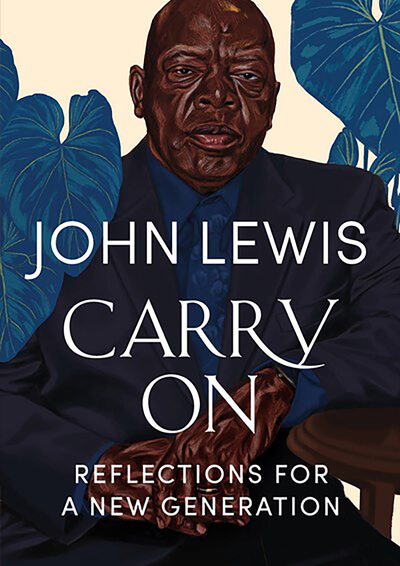When longtime Georgia Congressman John Lewis died from pancreatic cancer in 2020, President Obama said, “He, as much as anyone in our history, brought this country a little bit closer to its highest ideals.” This lovely book offers Lewis’ meditations on everything from love to public service and affirms that he indeed represented the best of our nation.
Carry On: Reflections for a New Generation is divided into short sections in which Lewis shares hard-earned wisdom from his years on the front lines of the civil rights battle. The son of a sharecropper, Lewis joined Martin Luther King Jr. and the Freedom Riders as they protested segregation across the South. For someone who faced injustice, police brutality and racism, Lewis remained remarkably optimistic. “Yes, we were jailed, arrested, firebombed, bloodied,” he writes in a chapter on activism. “But we never felt hate, and even though it can be hard to hold back our anger, it is worth the effort because it works in the end. We changed America, and now the time has come for more change.”
ALSO IN BOOKPAGE: Actor Don Cheadle narrates the audiobook edition of Carry On.
Lewis devotes much of the book to the current expression of our nation’s racism. He compares the deaths of Ahmaud Arbery, Breonna Taylor and Trayvon Martin to the 1955 lynching of 14-year-old Emmett Till and urges his fellow Americans to embrace the Black Lives Matter movement.
There are lighter chapters, too, in which Lewis writes about art, sports, clothes and books. He loved comic books as a kid, and a favorite hobby as an adult was frequenting flea markets searching for old books. These chapters read like someone shooting the breeze with an old friend. He recalls telling Congressman Elijah Cummings, for whom he was often mistaken, that he was going to get a tattoo on the back of his head so people would stop confusing them.
Carry On is a bittersweet book, coming so soon on the heels of Lewis’ death, but a beautiful reminder of finding hope and joy in the simplest things. “Happiness is being at home after a long day, playing with and feeding my cats,” Lewis writes. “I’m a happy person.”


















